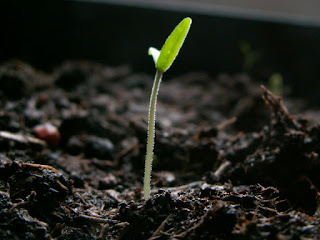Found Map - Marlowe Rd, E17
'cracked into a network of intricate fissures varying in depth and resembling a birds eye view, or map of some fabulous delta. A thousand imaginary journeys might be made along the banks of these rivers of an unexplored world'
Titus Groan, Mervyn Peake
Field Study's Man in E17, as a Steerpikey character, has been virtually prospecting Wood St, peering through fictional key holes looking for for an ugly babe with violet eyes. Revelatory rumbles stopped him in his tracks. Amidst the residues of crapulous revels along Dukes Passage he disturbed the spirits of bubble-icious delusion. These babes in the Wood St
with weirdly knotted locks seduced him with shrilly rendered tales of plenty for the easy taking. Buy one, get nine free! 'Why don't you believe us?' they squawked indignantly. 'Our father is Jacob Jacobsen - an honourable director of the South Sea Company, none other'.
Perhaps it says something about the values of the London Borough of Waltham Forest (it's council) that, Clock House (Wood or
Mood St), a grade II listed building is cited on the council's web site as having once been the home of Sir Jacob Jacobsen, a
successful Dutch merchant. Sir Jacob Jacobsen, not to be confused with a pirate of the same name, was a director of the South Sea Company - the 'successful' company that brought us the South Sea Bubble.
Rabbi Lawrence Rigal (1928-2010) went as far as to identify Clock House as, The
South Sea Bubble . He outlines some of the ignominious history of the building - that it was sequestered following the bubble burst. Was JJ among the directors arrested for their part in one of the grandest deceits ever contrived? It seems the burst of the bubble was merely a brief champagne induced sting in the nose for the successful businessman as he was able to buy Clock House back. Ah, such chagrin of the contemporary zeitgeist is this merchant banker bashing. However, taking a long rear view, to around 1720, a resolution was proposed in parliament 'that bankers be tied up in sacks filled with snakes and tipped into the murky Thames'.
http://en.wikipedia.org/wiki/South_Sea_Company
That was the early 18th century. Today it seems we must be content to just have executive 'merchants' forego on their bonusses whilst glibbly mocking public chagrin in rather pointless and very expensive public enquiries. Not all people who work in banks are as well paid, as
this article by Alf Young explains.
Back to the murky reaches of Walthamstows pastoral and stately heritage; Peter Ashan could have included Clock House in his Remembering Slavery* walks about Walthamstow. The South Sea Company had the contract to supply the Spanish American colonies with slaves. In his timeline to the roots of diversity in Waltham Forest, Peter Ashan states, Thomas Guy (one of the South Sea Company shareholders) 'earned enough money from the deal to provide funds for his legacy to build a hospital for the poor of London'. Such benevolence. Perhaps those who actually pay the 50% tax on their high earnings and bonusses consider themselves as providers for the poor.
Here in is some of the difficulty in admiring some of the craft and artistry of Walthamstow and surrounds (and anywhere perhaps) - what can be refered to as art as 'surplus value'. Clock House was recently nominated for
an award. The English Heritage web site describes the building as having a 'projecting pilastered porch of stucco' - a feature I admired and recorded, I think, in the photographs below.
If these features were a part of the house as it was newly built in 1706 and as an expression of the wealth and taste of the then owner, Sir Jacob Jacobson, then how, if at all, might the ethics and the aesthetics of this art be reconciled?
How would a wealthy Dutch merchant celebrate his part in the Dutch Golden Age? What would be appropriate decoration for his stately pile in rustic Walthamstow c.1700? I'm intrigued by the hairstyles of the figures. I wonder if they allude to classical Greek and/or Roman mythology - the goddess, Venus - a roman symbol of fertility and prosperity?
http://en.wikipedia.org/wiki/Golden_Age
'European
Pastoral literary and iconographic tradition often depicted nymphs and shepherds as living a life of rustic innocence and simplicity, untainted by the corruptions of civilization — a continuation of the Golden Age — set in an idealized
Arcadia, a region of Greece that was the abode and center of worship of their tutelary deity, goat-footed
Pan, who dwelt among them.
[3] This idealized and nostalgic vision of the simple life, however, was sometimes contested and even ridiculed, both in antiquity and later on'.
Here is a
link to a gallery of hairstyles and
another to a blog with a video demonstrating the fine art of archaeological hairdressing. Field Study's Man in E17 has been wondering what to do about his evergrowing bald patch and has been considering a toupee.
As he and I understand it, Clock House is now a residential building - of flats, rented or leased by London Borough of Waltham Forest and managed by Ascham Homes. Following its nomination for a design award, it received
a commendation.
* - Peter Ashan, Remembering Slavery and its legacy 1807-2007, pub' 2007, by Peter Ashan with financial assistance from Waltham Forest Arts Council. ISBN: 978-0-9553729-2-6.



























































